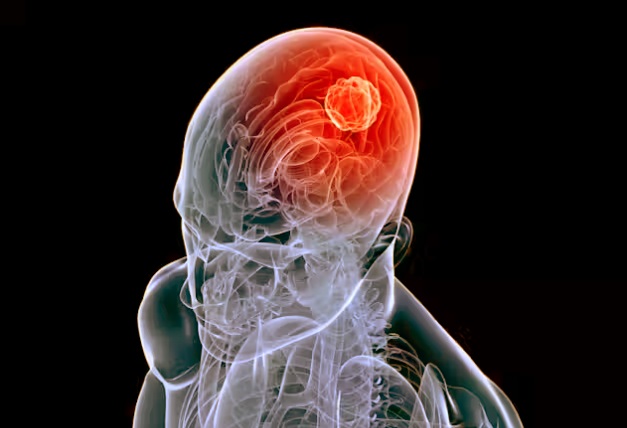New Potential Glioblastoma Therapy Shows Powerful Results Using Dual Drug Combination
Nikhil Prasad Fact checked by:Thailand Medical News Team Jul 09, 2025 6 months, 1 day, 58 minutes ago
Thailand Medical News: A Promising Step Forward in Treating a Deadly Brain Cancer
Researchers from Brazil have identified a powerful new drug combination that could one day transform the treatment of glioblastoma, the most aggressive form of brain cancer. This
Thailand Medical News report is based on a groundbreaking study by scientists from the Universidade Federal do Rio de Janeiro, Instituto Estadual do Cérebro Paulo Niemeyer, Instituto Oswaldo Cruz–Fiocruz, and the Instituto Nacional de Ciência e Tecnologia de Fármacos e Medicamentos (INCT-INOFAR). The team tested the combination of two compounds—LASSBio-1971, a quinoxaline-based EGFR inhibitor, and PKI-587 (Gedatolisib), a dual PI3K/mTOR pathway inhibitor.
 New Potential Glioblastoma Therapy Shows Powerful Results Using Dual Drug Combination
Current Treatments Are Not Enough
New Potential Glioblastoma Therapy Shows Powerful Results Using Dual Drug Combination
Current Treatments Are Not Enough
Glioblastoma, or GB, is known for its rapid growth, resistance to therapies, and poor prognosis, with patients often surviving only 15 months post-diagnosis. Standard treatments like surgery, radiation, and temozolomide chemotherapy offer limited results. Scientists have long sought better treatments, especially those that can penetrate the blood-brain barrier and attack the cancer more precisely.
The Brazilian researchers explored how combining two different classes of inhibitors could bypass the tumor’s defense mechanisms. The LASSBio-1971 compound targets the epidermal growth factor receptor (EGFR), while PKI-587 blocks the PI3K and mTOR pathways, which help cancer cells grow and survive.
Key Study Findings Reveal Powerful Synergistic Action
The research involved five different glioblastoma cell lines and used a range of laboratory tests, including cell viability, cell migration, and apoptosis assays. Both drugs showed the ability to cross an in vitro model of the blood-brain barrier without damaging it. When used separately, both drugs had tumor-killing effects, but when used together, they produced a dramatically more powerful response.
The combination significantly reduced the ability of glioblastoma cells to grow and migrate, arrested them in a dormant cell cycle phase (G0/G1), and triggered widespread cell death through apoptosis. In some cases, the required drug dose was reduced sixfold compared to using LASSBio-1971 alone, minimizing potential side effects.
Importantly, the drug combo had minimal impact on healthy human astrocyte brain cells, demonstrating high selectivity and safety in preclinical testing.
Mechanisms Behind the Success
The success of this strategy lies in its dual attack on two essential cancer pathways. EGFR, often overactivated in glioblastoma, promotes uncontrolled growth and survival. Meanwhile, the PI3K/mTOR pathway helps the tumor resist therapy and enhances its spread. Blocking both simultaneously avoids the tumor’s ability to activate backup pathways.
Interestingly, LASSBi
o-1971 also inhibits EGFR variants like EGFRvIII that are associated with even more aggressive tumors. PKI-587, on the other hand, effectively suppresses multiple PI3K isoforms and both mTORC1 and mTORC2 complexes, which are central to cancer cell survival and resistance.
Conclusions and Next Steps
This dual drug approach offers a promising new path for glioblastoma therapy, especially since the combination showed potent anti-tumor effects, selectivity for cancer cells, and the ability to cross the blood-brain barrier. Although both drugs demonstrated time-dependent effects and some variation across different glioblastoma types, their combined power consistently led to cell death and stopped migration.
If future animal studies confirm these results, the combination of LASSBio-1971 and PKI-587 could proceed to human clinical trials. Researchers emphasize that the treatment strategy could be adjusted to optimize safety and reduce any side effects linked to tumor cell breakdown. The study marks a hopeful development for a disease that currently has very few effective treatment options.
The study findings were published in the peer-reviewed International Journal of Molecular Sciences
https://www.mdpi.com/1422-0067/26/13/6392
For the latest Cancer News, keep on logging to
Thailand Medical News.
Read Also:
https://www.thailandmedical.news/news/brazilian-scientists-unveil-the-promise-of-liquid-biopsy-in-fighting-deadly-glioblastoma-without-risky-brain-surgery
https://www.thailandmedical.news/news/retinoic-acid-may-hold-key-to-weakening-glioblastoma-resistance
https://www.thailandmedical.news/news/sars-cov-2-nucleocapsid-protein-increases-rantes-levels-in-glioblastoma-cells
https://www.thailandmedical.news/articles/cancer
